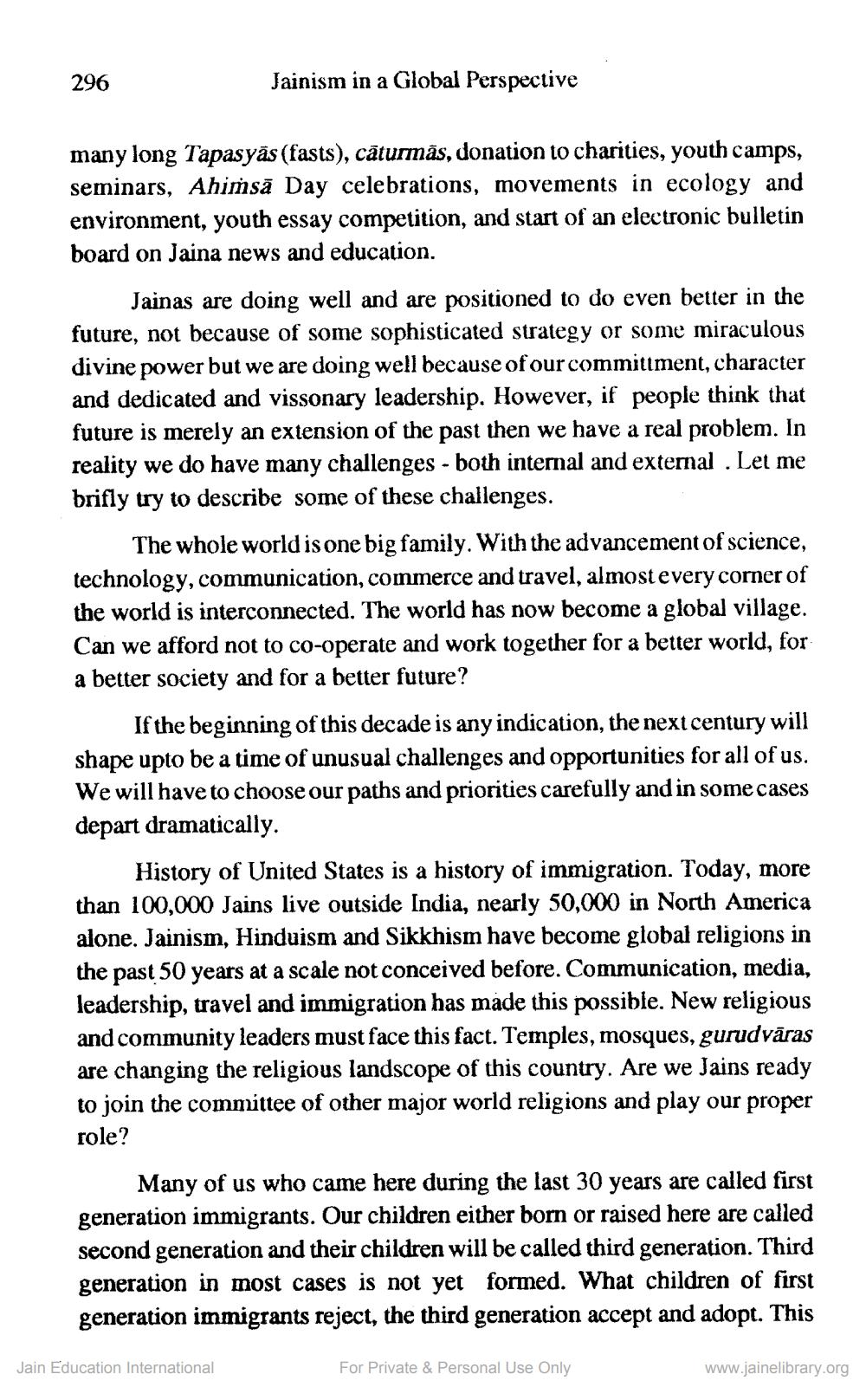________________
296
Jainism in a Global Perspective
many long Tapasyās (fasts), cāturmās, donation to charities, youth camps, seminars, Ahiṁsā Day celebrations, movements in ecology and environment, youth essay competition, and start of an electronic bulletin board on Jaina news and education.
Jainas are doing well and are positioned to do even better in the future, not because of some sophisticated strategy or some miraculous divine power but we are doing well because of our committment, character and dedicated and vissonary leadership. However, if people think that future is merely an extension of the past then we have a real problem. In reality we do have many challenges - both internal and external . Let me brifly try to describe some of these challenges.
The whole world is one big family. With the advancement of science, technology, communication, commerce and travel, almost every corner of the world is interconnected. The world has now become a global village. Can we afford not to co-operate and work together for a better world, for a better society and for a better future?
If the beginning of this decade is any indication, the next century will shape upto be a time of unusual challenges and opportunities for all of us. We will have to choose our paths and priorities carefully and in some cases depart dramatically.
History of United States is a history of immigration. Today, more than 100,000 Jains live outside India, nearly 50,000 in North America alone. Jainism, Hinduism and Sikkhism have become global religions in the past 50 years at a scale not conceived before. Communication, media, leadership, travel and immigration has made this possible. New religious and community leaders must face this fact. Temples, mosques, gurudvāras are changing the religious landscope of this country. Are we Jains ready to join the committee of other major world religions and play our proper role?
Many of us who came here during the last 30 years are called first generation immigrants. Our children either born or raised here are called second generation and their children will be called third generation. Third generation in most cases is not yet formed. What children of first generation immigrants reject, the third generation accept and adopt. This
Jain Education International
For Private & Personal Use Only
www.jainelibrary.org




